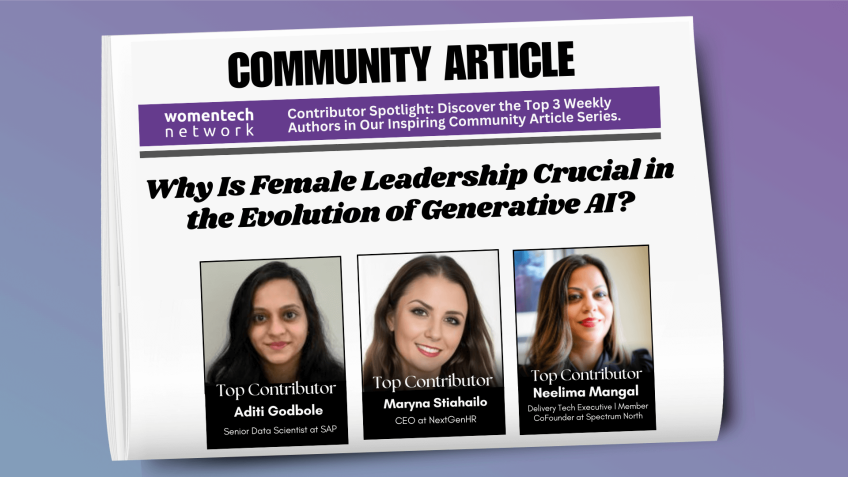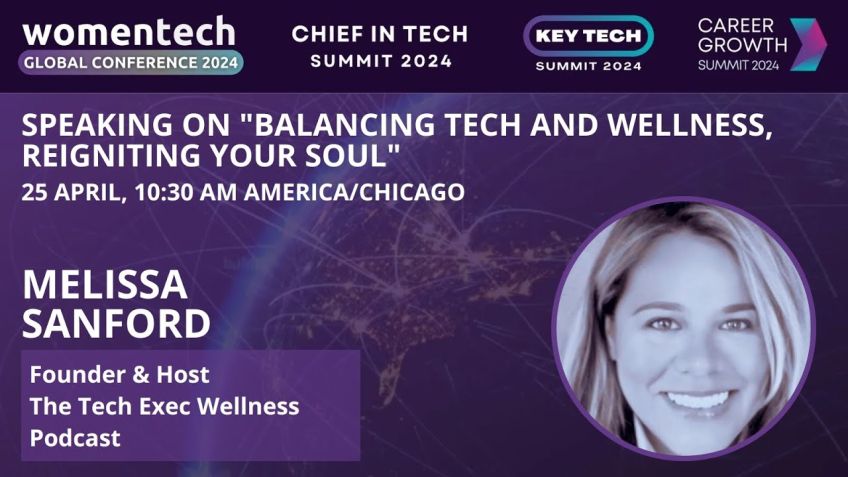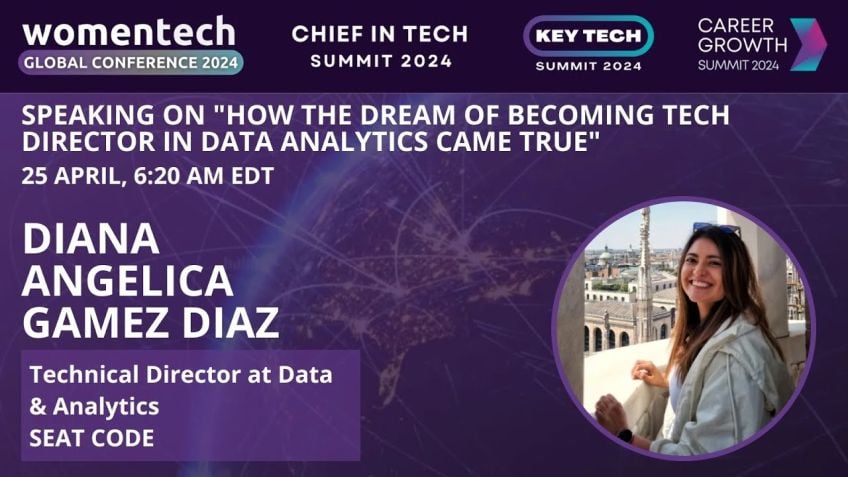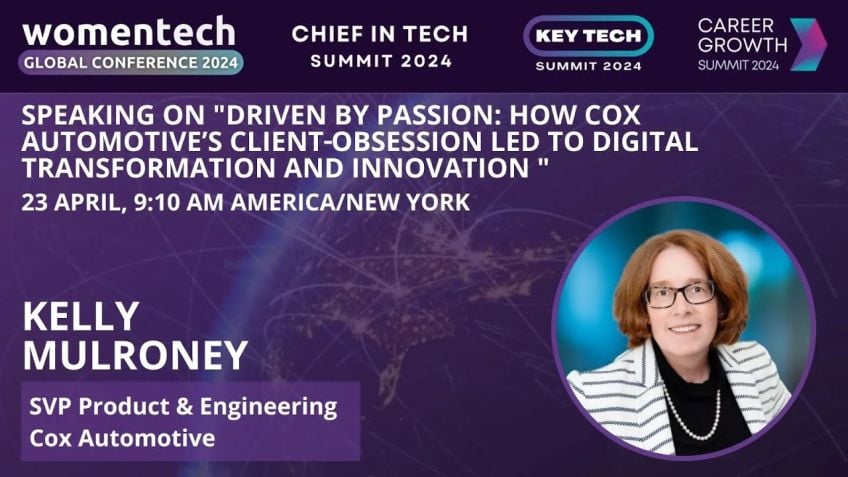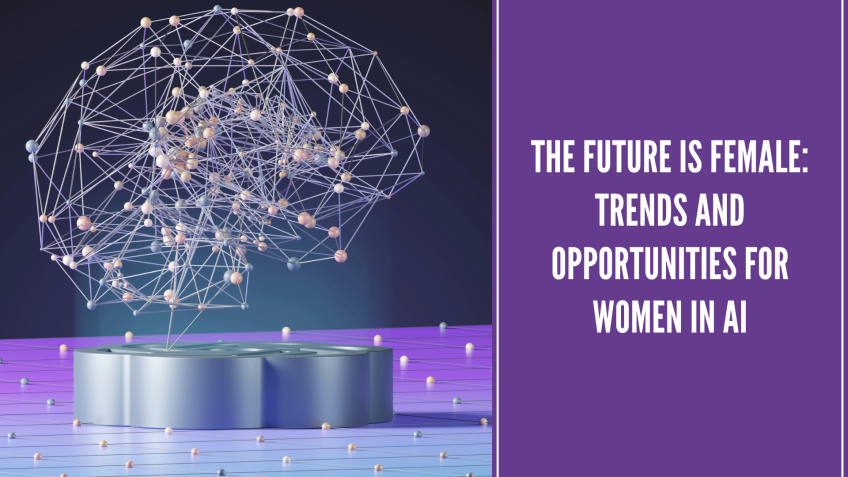AI and Autonomous Driving as Drivers of Transformation by Neda Cvijetic
Meet NEDA and Software X Organization
Artificial Intelligence and Autonomous Driving are not just the buzzwords of the current tech industry. They are redefining the way we interact with our vehicles and our environment. NEDA, Senior Vice President and Head of Artificial Intelligence and Automated Driving at the new Software X organization, introduces this advancement by sharing how her ambitious division is fueling the future of mobility.
Software X is a recent division of the parent company, ST, which was established after a merger between former Fiat Chrysler and Peugeot. Famous brands like Jeep, Maserati, and Alpha Mayo Dodge are now under this umbrella. With a presence in over 130 countries, diversity lies at the heart of the company's DNA.
Leadership and Technology - The Balance of Personal and Professional Life
NEDA is a staunch advocate of diversity and believes that her wide range of experiences across different continents contributes significantly to her professional life. Apart from leading groundbreaking changes in the field of AI, she also emphasizes being a "multidimensional" person that brings the whole self to work.
Starting her career at NEC Labs America and later working with Tesla and NVIDIA on advanced projects in autopilot and infotainment systems. At ST, she's channeling her vast experience into developing AI for autonomous driving.
Understanding AI – The Concept and the Reality
While the term Artificial Intelligence might seem intimidating to many, NEDA takes it back to the basics. The term, first coined by Alan Turing in the 1950s, refers to the capability of a machine to mimic human-like intelligence. The definition remains relevant even today.
However, the tasks and complexities handled by AI have significantly evolved since Turing's time. AI currently can benefit from larger amounts of data without saturation - a capability not seen with older algorithms. This continuous learning capability of AI forms the core of autonomous driving – the ability to perceive, navigate, and react to an increasingly complex world.
The Vision of Software X for AI and Autonomous Driving
At Software X, AI and autonomous driving are not mere science experiments but are central to the impact of their business. The development of these capabilities directly targets increasing revenue by introducing new software-defined AI and autonomous driving features.
The Stellar Brain – The Key to AI Integration
The implementation of this vision is made possible by something coined as the 'Stellar Brain', a high-powered AI computer at the heart of every vehicle. This AI computer, similar to a human brain, connects physically to sensors (the eyes) and actuators (the limbs), thus processing raw data and turning it into meaningful action.
The software side of things includes an operating system unique to the safe running of the vehicle, middleware handling synchronization and orchestration, and application layers for autonomous driving, cockpit interactivity, connectivity, and more. This complex and extensive software stack is powered by the Stellar Brain.
AI Adoption and Implications in Vehicle Brands
Software X is excitingly rolling out its AI and autodrive technology across the various vehicle brands under the ST company. From Jeep, Dodge, Ram to Maserati, each brand is provided a unique AI experience while maintaining the brand's essence and design vision.
The company also ensures that the AI capabilities are adjusted personally for each driver, increasing the in-cabin response and their overall experience
Conclusion
From the introduction of AI in unstructured off-road adventures to the development of proactive digital systems that learn and adapt to each driver, the possibilities are endless. As NEDA rightly says, "it's all about delighting the customers of iconic brands," and this approach is what makes NEDA and Software X stand out in their pursuit of technological advancement.
A fireside chat for further discussion and understanding the ongoing projects been scheduled as well. As AI integration continues to redefine vehicle interaction, the company invites everyone to join in this exciting journey into the future of mobility.
Video Transcription
Thanks everyone for joining the session. My name is NEDA. I am senior vice president and head of artificial intelligence and automated driving within the new software X organization at ST anti software X stands for software driven experience.Um It's a new organization, it's about a year old and for those folks who don't know yet what Stel Anis is, you probably know our brands. So if you heard of Jeep and Maserati and Alpha Mayo Dodge, uh Peugeot and 14 different vehicle brands. STIs is the new parent company of all of these um that was formed by a merger between um Peugeot um and Alliance and a former Fiat Chrysler. So, one thing that we do at Salant is that I really like, we have this kind of about me slide to get any conversation going. So before I talk about all the technology, I wanted to tell you a little bit about myself. Um So I um take diversity very seriously, you know, at Atlantis, we have um people and presence in 100 and 30 different countries and that's a lot of different nationalities. And uh what I'm proud of is that I contribute to that diversity of culture and nationality as well. I'm originally from Serbia in eastern Europe. You see here a couple of photos of my two heroes, um Nikola Tesla, who is a Serbian American electrical engineer, which I'm proud to say I am as well.
Um And the tennis champion Novak Djokovic who um sometimes a weird guy but, you know, I, I really like his mental toughness. I really like um his response under kind of high pressure moments um in his professional life. And so I think that that's something I look up to. Um but I'm also a citizen of Canada of the United States. I've lived on different continents, have different experiences and I bring that into my work life every day and over on the right, you see my family, uh my husband and our, and our baby. Um and um on the picture on the far right, you can see me and my baby and matching outfits that actually I design. So I like to tell people about my family life. I like to tell them about hobbies. I have outside of work. I tell that to, to the engineers on my team as well. Look like bring your whole self to work. This is all about being a multidimensional person. Um And uh and, and we should not hide that, you know, that in no way diminishes your capability or your interest in engineering that actually just makes you more interesting and more real. Um So um my work history, I started out at um Nec Labs, America.
Uh right after my phd, that was a small start up within the bigger nec, a bigger company, Japanese company with a lot of history. Um And so now I feel very similar, by the way, software X is like a little start up with install anti. So I guess it's come full circle for me. Uh But basically there, we, we built a brand new technology that ended up in A I and machine learning systems and telecom systems. Um And what I really liked about working there is that I had a chance to also participate as an adjunct faculty at Columbia University Electrical Engineering uh one day a week. And so communicating, sharing information has been near and dear to my heart from the very beginning of my career. Um And after that, I, I went to Tesla, I worked on advanced projects within autopilot and infotainment systems. Spent a couple of years there, then, then did something very similar NVIDIA for A I in autonomous vehicles and computer vision. And then since October of last year, I've been at ST Anis uh doing A I for autonomous driving uh and cock applications to start. And now I have that responsibility extended to A I and uh all of autonomous driving. And if you want to uh learn more about Stonis, I wanna let you know that we will be having a fireside chat also. So please check that out.
Um And you can learn a lot more about all the exciting things we're working on and, and the kinds of awesome hiring and recruiting efforts that we're doing. All right. So that was a little bit about me. Now, let's talk about A I, so the question that I get a lot, um, especially for, for folks who are a little bit new to this whole concept is what is it? So, first of all, what is a I, how can I think about this? And I always like to go to, to the first principles of things. So I think that's what we should do here. Um Back in the 19 fifties, Alan Turing really defined what I think remains the criterion for what artificial intelligence is even today. And that is the ability of a machine to exhibit humanlike intelligence. So if you saw a task happening and you were standing from behind a screen and you couldn't tell if a machine is doing that task or if a human is doing that task, that's what ma what machine intelligence or artificial intelligence is. Um You know, back in the day tasks were a lot simpler, right? So um adding two numbers together, automating a routine uh task that was artificial intelligence at the time right now, we don't really think of it that way. Now, it's just like automation, right?
Because the bar has moved up so much right, modern A I is is a lot more advanced than, than, than you know, the kinds of tasks that could be handled back in the day. So modern A I with these deep neural networks is really modeled after the human brain. So we have these hundreds of, of, of, of billions of neurons and and uh that are connected in these nonlinear ways with synapses and they trigger once we, you know, learn and absorb certain contexts. And uh and, and what we've done is is mono deep neural networks, literally after those, after that architecture, after those connections in the brain. And what you see here with this data chart is that what happens with, with modern A I, that doesn't happen with older algorithms is that is that A I continues to benefit from larger amounts of data with older algorithms that are, you know, based either on older forms of A I or not even based on A I, the more data you give them after a certain point, they saturate, they cannot continue learning.
Whereas with deep learning, with deep neural networks, this modern A I, the capability to learn just keeps going up and up and up. And so in my world, these capabilities of the vehicle to autonomously perceive the world, despite the complexities of the world to, to to navigate that world, uh all of that is enabled by modern A I otherwise it's just too complex and also as an automaker, it sets you up in a really nice way because the most powerful thing to be honest with you that, that, that is that the vehicle touches that world, that we have access to that data that we can learn continuously from that.
And so that's why for, for me in, in what I do uh for A I both inside of the cars, think of a proactive digital assistant and, and outside of the car, I think autonomous driving this modern A I is so important. It's the technology that, that enables these capabilities and, and you know, looking at the mega trends in our industry, this is one of them. So um A I autonomy, that's a huge mega trend in our industry. Um And you see that aligned with other trends that we're seeing. So you see that mobility is gonna be needed for a lot more people um that we're seeing electrification happen uh in a big way um that the vehicles are becoming connected by definition. It's not the exception anymore. It's the rule um including five G connectivity. So all of these things, the need for mobility to give people their freedom back, the fact that cars are connected to the internet, meaning that we can collect that data and and improve our capabilities continuously through over the air updates. Um All synergize with these increased developments in A I and autonomy. And so this is really playing harmoniously with the other huge trends that we're seeing in the industry. Now, what are we doing in ST anti, what is our plan? What are we trying to accomplish with A I and autonomy? So for me, what's really exciting is that we're not conducting just a fancy A I and autonomous driving science experiment. We are literally at the core of the impact of our business.
So what we are doing in developing these capabilities is directly geared at uh increasing revenue for our customers through really new and exciting software defined A I and autonomous driving features in a big way. So leveraging the fact that these cars are gonna be connected, that they're gonna have more and more compute, uh leveraging the power of our iconic brands um that I mentioned at the beginning to unlock brand new capabilities for the vehicle. And what do I mean by that? So what I mean by that is that in the past, you know, things with a vehicle have been more geared at, OK, the product at the point of sale. So you buy the car and that's the main thing, but we want to unlock brand new opportunities here that, that don't even exist uh at the moment. So features on demand, you can download things onto your car in terms of let's say an automated driving capability just for your weekend trip, for example, um or uh you know, the ability to uh increase your in cabin uh proactive digital assistant uh response, you know, for, for the cabin to become more and more adjusted to you personally, based on, let's say, even your connected uh vehicle account through your phone uh through the awareness of sensors that are on board the vehicle.
Um All of these things are going to get unlocked with this new software oriented approach and the enhancement of our A I and autonomous driving capabilities. So that's the vision of what we're trying to do. But then how is it actually accomplished? And now we look at the fundamental tech first principles that allow this vision to come to life. What is happening inside of the car that makes this vision possible is that we are putting something called the stellar brain inside of every vehicle. And what this really means is that this is an A I computer, you know, traditionally in vehicles, there's not, there's not a large centralized computer inside of a car uh that doesn't exist, but we're changing that we're putting this inside of a vehicle with a lot of computing capability.
And then that becomes really the brain that is able to power all of these applications that we were talking about just a minute ago. So, Stella Auto Drive, that is our autonomous driving um platform and product smart Cockpit, that's A I for inside of the cab. And uh you know, this proactive digital system that I was talking about all of these run on a computer just like you have on your laptop. But in this case, inside of the vehicle, uh and doing these amazing things in real time, I think some actually more amazing than what your computer can do. Your computer cannot perceive everything that's happening around it. But um in this way, c A brain and, and auto drive and Smart cock that are gonna be even more exciting and we are rolling this out um across our different brands. And so I think what makes it really exciting to work at Dantis on this particular problem is that we have the ability to put this into some of the most um iconic cars in the world. Um I mentioned uh Jeep um there's Dodge, there's ra m there's Maserati Al for Mayo. I can't, you know, list off all of them 14 different brands. I really encourage you to go online and to discover um all the different brands that we have.
But what is really, really exciting is building something that is gonna support all of our different brands while also allowing them to differentiate themselves, um show their unique value, their unique uh personality as well, which has been exciting. So we kind of get the best of both worlds.
We get to build a technology that's going to be in millions and millions of cars um in these super well known brands, but also support um their design vision, their unique brand value propositions and activities um that, that set them apart from everyone else. Um And that's what's cool about something like A I where you can uh personalize as well so that your Dodge does A I in a Dodge way, right? Unique to its own uh brand values. Your Jeep does it in its own Jeep way. Um And uh and I think that that is a really powerful thing that can really enhance the power that these brands already have. OK. So now uh going a little bit under the hood, taking you under the hood to really show you what this looks like. Um What does this look like on the vehicle? How does it get actually implemented? So we talked about the brain, the computer um in this picture that's this HPC Central SOC system on chip. This is the brain computing platform that enables the actual computations to take place that brain is connected physically through, through electrical connections to sensors on the car, which are like the human senses. So think about the camera, the connection between a camera sensor and stellar brain, like the connection between your eyes and your brain.
That is what establishes this processing pipeline between raw data of the car, seeing the world and the compute that turns that data into meaning into complex semantics to let the car figure out what to do. And also a physical connection to actuators, you can think of actuators as brakes, as steering systems as physical ways in which the car navigates the environment, just like we have actuators, our hands, our feet, all of these things are that actuate our motion in the real world.
So that's how we implement the connection between what the car is seeing and executing in the world. And then above that world, you have the software world. So the way that that gets implemented in the software is through an operating system, uh Now it's a little bit unique than what you have on a computer or a phone. For example, uh it has to be certified for safety in a very particular way, compelling way because you know, uh safety is the most important thing in our designs uh for these systems. And then above that, um we have middleware that does a lot of important engineering housekeeping items like synchronization and orchestration. And above that are all of the application layers that we talked about before. So autonomous driving is one you have the cockpit area which is another.
Uh but then we also have other things, you know, we are also making a massive push towards electrification. So power train and energy management, that's another one connectivity, the interface, wireless interface or the interface between these applications and the outside world is also there.
So this really shows you how fascinating uh the stack, the software stack powered by the stellar brain compute platform becomes, this really becomes I would say the most challenging and most sophisticated software, embedded software design and application. Um Frankly, I think in our lifetime and what's also fascinating is that you have the onboard component, which is shown in the blue here and the off board component, meaning let's say in the cloud coexisting together, they're all connected together. And so you, you really are getting uh both worlds here uh working together in a very compelling way. Um I, I wanted to show you a little bit um you know, a preview of what I mean, let's say of A I in the smart cockpit. So now imagine that that you're in a Jeep. Uh And what's really cool about Jeep is this off-road component, the component of adventure. So imagine that you are in the smart cockpit and as you're moving through this unstructured off-road environment, your car is able to understand what is happening and point out different interesting things like you see this yellow weight point coming up like it's telling you, hey, over here that there's something really interesting in this off-road area.
Um And, and what I think is, is really unique here is is in this case, you know, there's no um like hints. Oh this is a highway with traffic lights, there's some structure I can use to understand what is happening. No, um this smart cockpit is able to figure this out in a very unstructured open type of environment, which is, which is much harder uh to be perfectly frank. So the message that I want to convey here is that because of the iconic nature of our brands, some of the challenges that we're tackling in A I and autonomous driving are even more complex and even more sophisticated than, than what you typically think of. Uh let's say in the context of highway based autonomous driving or something like that. So we really are bringing up a world class team that is, that is tackling some of the most challenging open questions in this area um in the industry. And so I just wanted to give you a little bit of a, a preview of that. And even in this cockpit space, you know, in this A I for cockpit space, um there's so much that happens that is enabled by A I this idea of personalization that I mentioned um briefly before the fact that your car um understands, you gets to know you is able to adjust things based on, on you and your preferences, uh voice, you know, we, we talked about our partner, we, we have um a partnership with Amazon and so the ability to leverage, for example, Alexa inside of a vehicle um as well, um as well as all of these different things, contextual awareness, you know, using these sensor capabilities inside of the car, all of this plays into um the smart cockpit and, and the customer centric user experience there.
And um as far as the auto driving capability goes you know, we have a really exciting history here um in 2024 the ST auto drive product that, that I talked about um is going to um be released and the team is very actively working on that too. Um And then we have activities um across different levels of automation as well. Now, what I wanted to share a little bit with you also is um how do we go about this? You know, I talked a little bit about the cycle of on board off board, but let's dig in a little bit and and see how this actually works altogether. So what's really exciting about um having the vehicle that goes through the world and sees the world and gathers that data is that we can through this connectivity that that I talked about upload that data off board, let's say into a cloud environment. Uh take that data in and then look at it, see, see what is interesting about this data. What is this data teaching me that I didn't know before? And that's this process of data curation, right? Finding the interesting data that you want to look at and then data labeling uh literally teaching the car, hey, look at this aspect of, of this, let's say camera picture.
Um and then using that data to train new models and then also using that data to simulate how the models will perform in different situations. Replay it, see what, what, what would be different. How is it better than, than a model that you had previously? And then once you get something that's, that's better and improved, you're able to complete the circle and actually deploy that model back onto the vehicle through this over the air uh update um ot A process. And in this way, the car is continuously learning that fleet is continuously getting better over time um through the power of data and through the power of this A I development cycle. And so to summarize, I um wanted to uh bring it full circle. Um What we are looking at here is really a strategy that uh is all about delighting the customers of iconic brands. So a very customer centric way to develop artificial intelligence and automated driving capabilities that is powered by these core tech platforms deployed at scale.
So stellar brain, the computer, so autodrive automated driving technology and the smart cockpit, that's the A I for cockpit piece. And what is really exciting is that we are really, really focused on execution here because these things are very core to our business and our impact as a company. And we are partnering uh having some very exciting partnerships in this space to solve for this. Um ultimately uh tremendous opportunity, tremendous growth opportunity. And we would love for you to join us on this exciting journey. I wanna mention again that there will also be ac anti fireside chat. And so uh please join us there as well to learn more about us and, and um and what we're doing and um with that, um I think I will um wrap this up. So I think that this brings us right at time. Uh And so I wanna thank you guys for joining us today. Um Please feel free to uh reach out uh if you might have any additional questions uh for me. Um And I hope that you enjoy the rest of your conference as well. Thank you so much.

